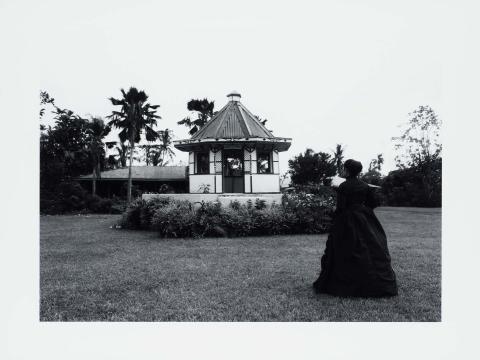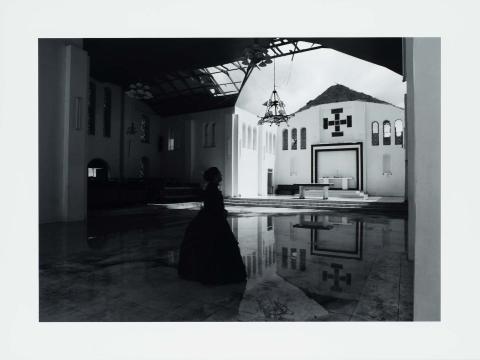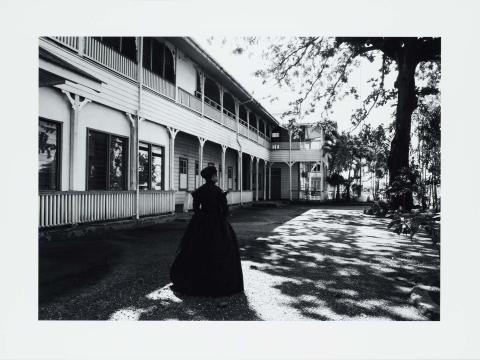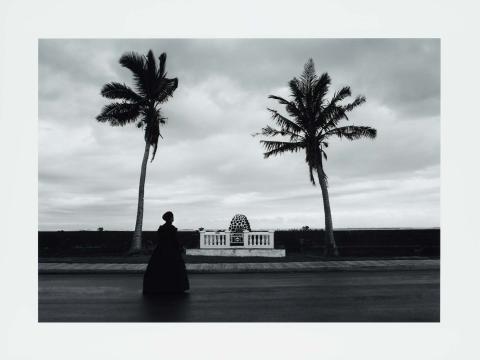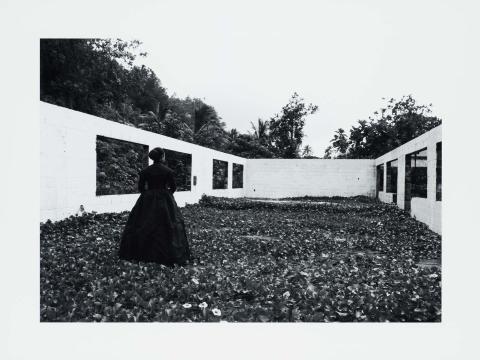ESSAY: Kihara's '(Where do we come from? What are we? Where are we going?)'
By Ruth McDougall
Artlines September 2015
In the late nineteenth century, French artist Paul Gauguin borrowed stylistic traits from Italian Renaissance fresco painting to create the ambitious, nearly four-metre-long painting D'où venons nous / Que sommes nous / Où allons nous (Where do we come from? What are we? Where are we going?), dated 1897–98. The work was created in Tahiti as a visual manifesto on the nature of life, and arranged human, animal and symbolic figures across an idyllic island landscape. Inspired by a widespread fascination with the South Seas, the painting’s landscape and use of naked and partially clad figures mirrors the idea of Tahiti as an untouched Arcadian paradise that was popular at the time.
Just over a century later, Samoan artist Shigeyuki Kihara employs photographic technologies (first developed in France in the mid nineteenth century) to create a narrative tableau exploring the complex interwoven histories that affect life in contemporary Samoa. Each of the photographs in this series features the artist in the guise of her alter ego, ‘Salome’ — a resurrected late-nineteenth-century widow in full mourning attire — viewing historically ‘altered’ landscapes of Samoa.
Separated by over 100 years, Gauguin’s painting and Kihara’s photographs both situate islanders against a Pacific landscape. While Gauguin uses a Tahitian landscape as the exotic backdrop for his explorations of life, death, poetry and symbolic meaning, Kihara’s engagement shows a nuanced understanding of Pacific culture. Spooling cinematically across time as well as space, her photographic tableau sees Salome appear at iconic sites in a contemporary Samoan landscape, in the wake of Cyclone Evan and with the damage of Tsunami Galu Afi (in 2009) still evident. The huge physical impact of these natural disasters on well-preserved colonial architecture and institutions, historic landmarks, and more recently erected structures, such as the international airport, seems to highlight not only the historical and cultural occupation of this landscape, but also the cultural and economic challenges faced by an isolated island nation as it struggles to assert its independent presence on the world stage.
Kihara’s use of the photography to create her narrative tableau continues her long-held interest in redressing European stereotypes of the Pacific, perpetuated through colonial photographs of Samoa and its people. In addition to its Gauguin references, ‘Where do we come from? What are we? Where are we going?’ responds to the images of Samoa taken by Alfred Burton, who travelled on the Union Steam Ship Company’s inaugural cruise of the Pacific in the 1880s. The full-length mourning gown worn by Salome is inspired by the restrictive dress introduced to Samoa by early missionaries, which was worn by the female sitter in Thomas Andrew’s photograph Samoan Half Caste (from the album ‘Views in Pacific Islands’) 1886, in the collection of the Museum of New Zealand Te Papa Tongarewa, Wellington. While Andrew’s subject looks directly at the viewer, Kihara’s tightly corseted Salome turns away, instead casting her gaze over the landscape before her. Adopting the roles of director and producer, the artist provides Salome with a degree of agency unknown to her historical counterparts, with photographs that provide a postscript to earlier representations of these and questioning the stereotypes they asserted.
Connected objects
Related artists
KIHARA, Yuki
1975
- present
Full profile
for KIHARA, Yuki
